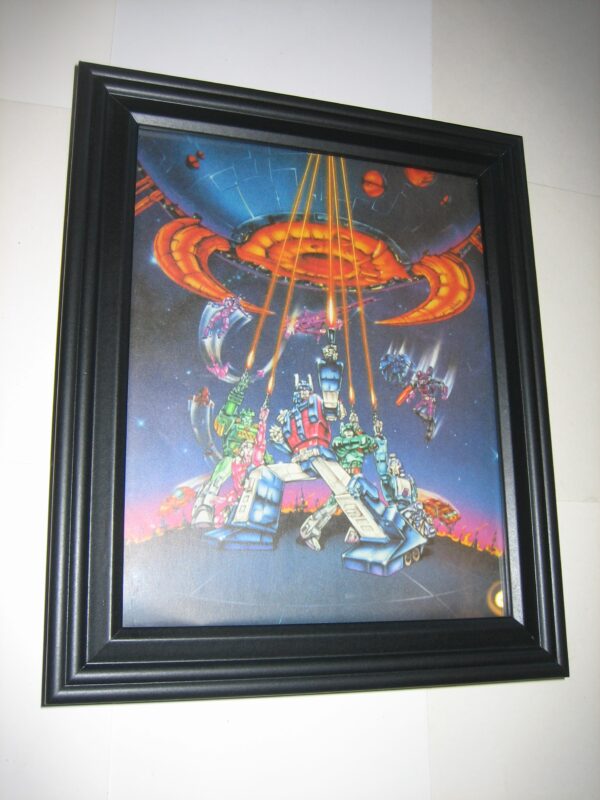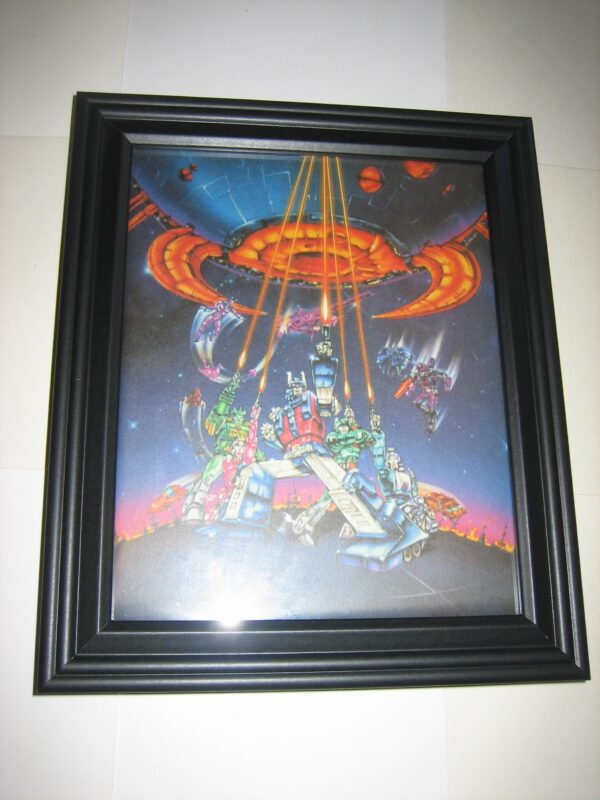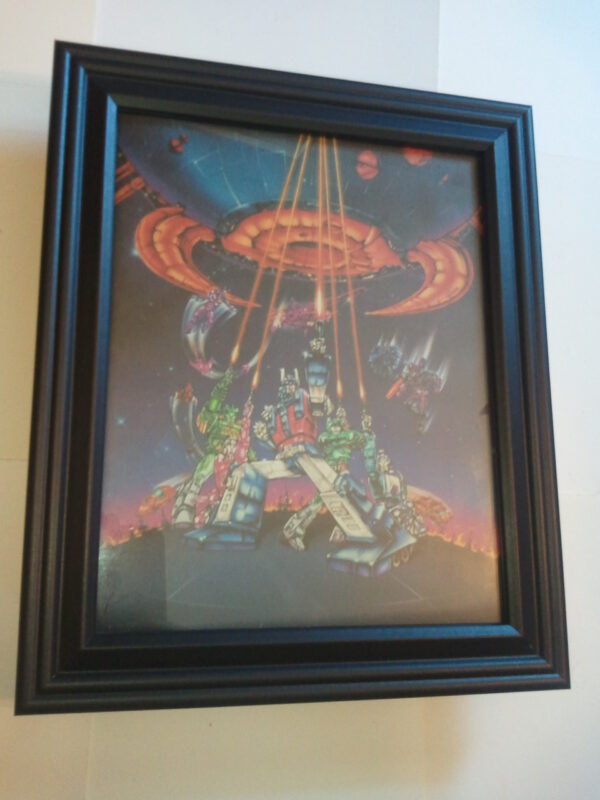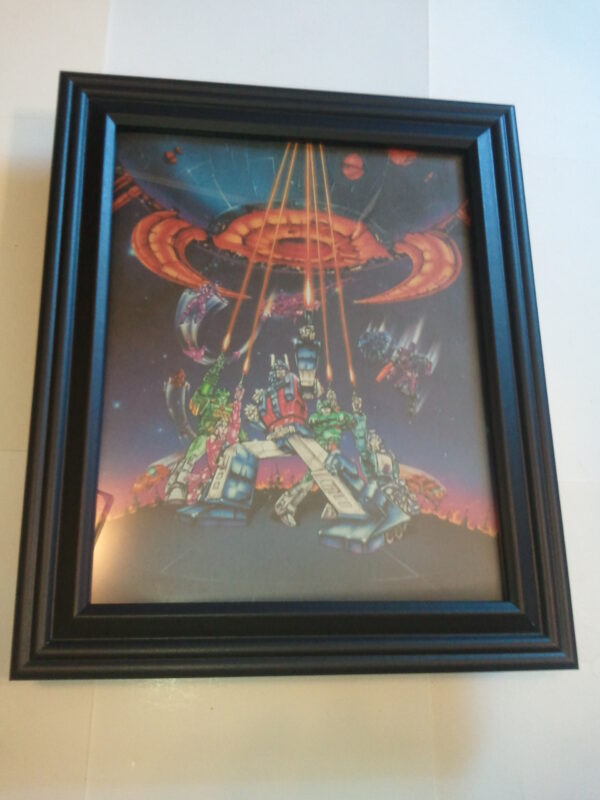Transformers Pin-up FRAMED # 1 vs Unicron The Animated Movie Ultra Magnus
$49.99
Description
The Transformers: The Movie is a 1986 animated feature film based on the animated TV series by the same name. It was released in North America on August 8, 1986 and in the UK on December 5, 1986.
The film was directed by Nelson Shin, who produced the original Transformers television series, and features the voices of Eric Idle, Judd Nelson, Leonard Nimoy, Casey Kasem, Robert Stack, Lionel Stander, John Moschitta, Jr., Peter Cullen and Frank Welker. It also marked the final roles for both Orson Welles, who died the year before its release, and Scatman Crothers, who died months after its release.
The story takes place in 2005, 20 years after the events of the TV series’ second season and serves to bridge into the third season. Set to a soundtrack of synth-based incidental music and hard-driving metal music, composed by Vince DiCola, the movie has a decidedly darker tone than the television series, with detailed visuals in Toei Animation’s typical anime film styling, and like G.I. Joe: The Movie, Decepticon villains that are more menacing, killing without hesitation. The film features several grand battles in which a handful of major characters meet their end. The film’s tagline was: “Beyond good. Beyond evil. Beyond your wildest imagination.”
Ultra Magnus, Kup, Arcee, Springer, Galvatron and Unicron! Ultra Magnus – Robert Stack, Hot Rod – Judd Nelson, Kup – Lionel Stander, Springer – Neil Ross, Arcee – Susan Blu, Megatron, Laserbeak, Rumble, Frenzy, Soundwave, Wheelie, Junkion – Frank Welker,, Starscream – Chris Latta, Galvatron – Leonard Nimoy, Unicron – Orson Welles.
Often referred to by fans simply as “TFTM” or (until 2007) “The Movie”, this film opens with characters who had been featured in the first two years of the toyline and associated media (cartoons, comic books, etc.), but quickly introduces new characters and kills many of the old ones to make room – basically, the writers wanted to make all the kids watching cry. In particular, Optimus Prime, Megatron, and Starscream are all destroyed during the course of the film (each one comes back later).
The movie was a step up in almost every area from the television series, with a more sophisticated plot, more serious treatment of war and violence, a hugely ambitious scope and a greatly increased animation budget with well-known celebrities providing voice work. For these reasons the film remains very popular with children of the 1980s.
A planet-sized Transformer called Unicron who eats other planets is approaching Cybertron. As part of their continuing wars, the Autobots and Decepticons have a fierce battle on Earth which sees both Optimus Prime and Megatron mortally wounded. Prime passes the Matrix of Leadership to Ultra Magnus and dies, and Megatron is transformed by Unicron into Galvatron. Starscream (briefly) assumes leadership of the Decepticons, but is killed when Galvatron arrives at Cybertron. Galvatron then chases the surviving Autobots on Earth across space, splitting them up and taking the Matrix. The Autobots find their way back to each other, and follow Galvatron to Cybertron just as Unicron transforms into robot mode and begins to eat their world. Travelling inside Unicron, Hot Rod recovers the Matrix, transforms into Rodimus Prime, literally overthrows Galvatron and uses the Matrix to destroy Unicron. The Autobots reclaim Cybertron after the Decepticons evacuate it, and Unicron’s head orbits it.
“One shall stand. One shall fall.” —Optimus Prime uttering the most quoted line of the Movie.
The Transformers: The Movie remains one of the most important elements of the entire Transformers brand, both within the fiction and from the perspective of the brand’s popularity and “mindshare”.
Fictionally, it established several story concepts that have been used repeatedly in the years since 1986, some of which—such as Unicron and the Matrix—are now central to the entire Transformers mythos. The movie is also the centerpiece of the most well-known Transformers continuity: the G1 animated universe. The G1 cartoon is split into “pre-movie” and “post-movie” sections which feature different characters and settings, and even somewhat different visual styles. (Most pre-movie episodes were animated by the studio Toei, while most post-movie episodes were animated by AKOM.)
To an entire generation of young fans, the movie was the most visually spectacular and narratively epic Transformers experience of their entire youth. Events such as the death of Optimus Prime are widely reported to have reduced many kids to tears. It is hardly a surprise that these emotional experiences embedded themselves deeply in many fans’ memories.
This film was the last professional performance by Orson Welles. According to production materials shown at BotCon 2000 by Tim Finn, the voice recording sessions for The Transformers: The Movie were done on September 10 and 11 of 1985. Welles died on October 10 of that same year. It has often been speculated that Unicron’s last line (“Destiny… you cannot destroy my destiny…!”) was recorded by another actor—possibly Nimoy—because it sounds different than the other lines. This speculation has been quashed by statements by Transformers voice director Wally Burr.
And don’t forget the incredible soundtrack! Stan Bush’s song “The Touch”, which prominently featured in the film, was originally written for the Sylvester Stallone movie Cobra.16 The song later appeared again for the Transformers franchise, along with a remixed version for the 2012 game Transformers: Fall of Cybertron. The movie also feature other well known songs including “Instruments of Destruction” by NRG, Stan Bush’s song “Dare”, two songs by Spectre General, “Nothin’s Gonna Stand In Our Way”, “Hunger” as well as “Weird Al” Yankovic’s song “Dare to Be Stupid”. The Transformers theme song for the movie was performed by the band Lion.
Frame is shrinkwrapped until time of purchase. Ships boxed with packing peanuts.
THE PERFECT GIFT!
Related products
-

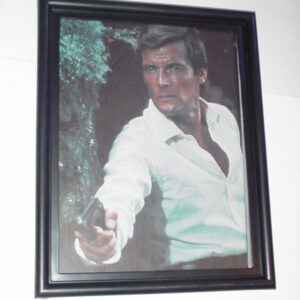
James Bond 007 Pin-up # 7 FRAMED Roger Moore
$44.99 Add to cart -
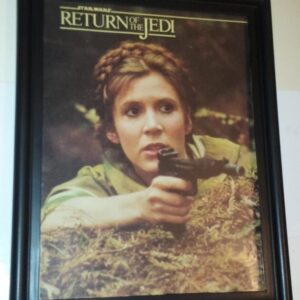
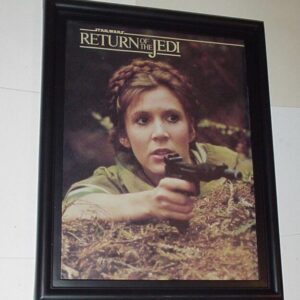
Star Wars Pin-up #25 FRAMED Princess Leia Carrie Fisher Return of the Jedi
$44.99 Add to cart -
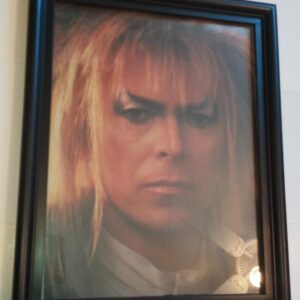
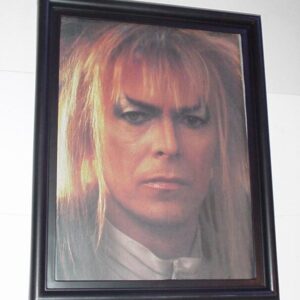
Labyrinth Pin-up # 1 FRAMED David Bowie Jareth the Goblin King
$59.99 Add to cart -
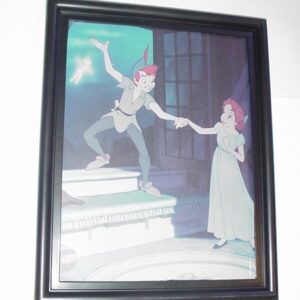
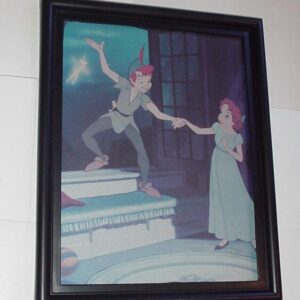
Disney’s Peter Pan Pin-up # 1 FRAMED Peter Wendy and Tinker Bell
$44.99 Add to cart
